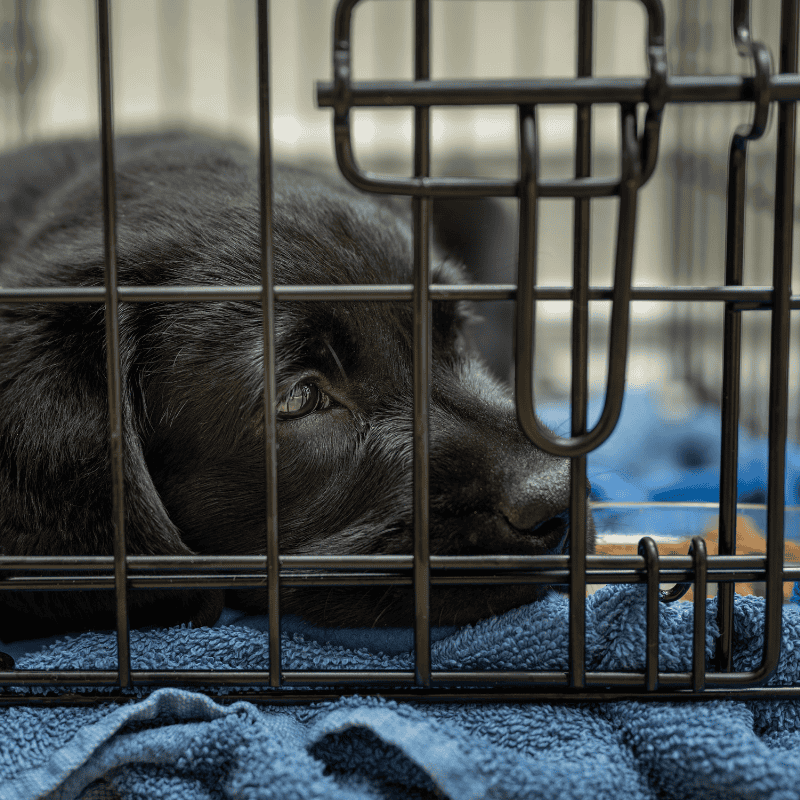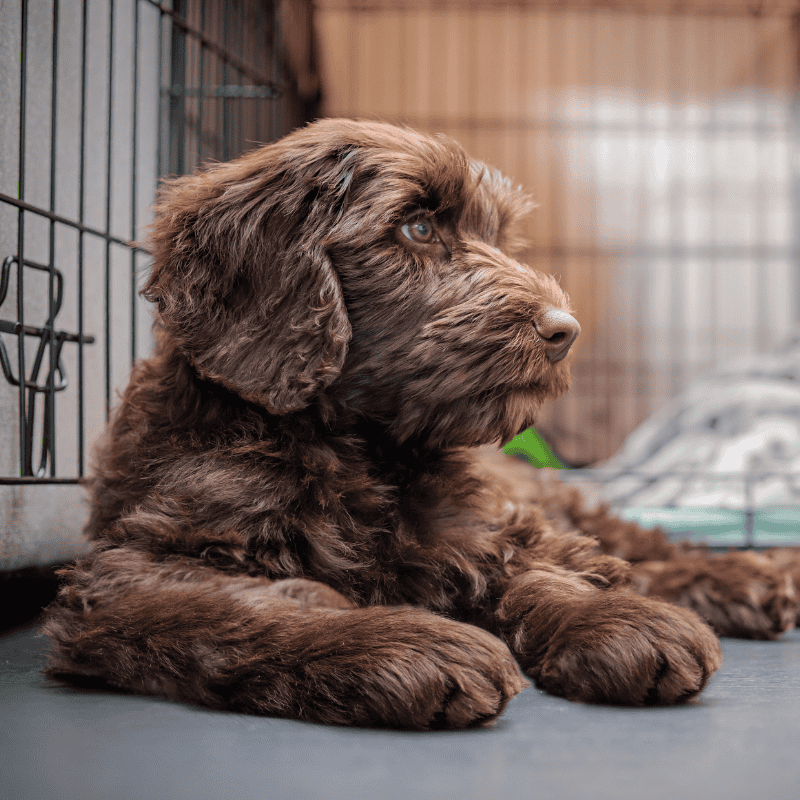Dogs
The Perks of Using Dog Crates and Cages
A Safe Place to Retreat
The primary benefit of a dog crate is offering your pup a safe place where it can retreat. Your dog shouldn’t see the crate as a cage – it should see it as a private bed where it is protected and can relax.
Many dogs instinctively prefer to rest in an enclosed space like a crate as their ancestors retreated into caves and dens.
When your dog gets overwhelmed or needs a break from your family, the crate is a great way for it to have some alone time and unwind. This can minimise stress and reduce aggression.
If you leave the crate door open, you may find your dog heads back there several times a day for a nap. To make your crate extra cosy, fill it with a comfy dog bed or blanket.
Security During Stressful Situations
A dog crate offers your dog a safe place to hide if it feels scared or threatened.
This is especially beneficial if your dog is frightened of fireworks or storms. When these events happen, fill the crate with cosy bedding and encourage your dog to head in and relax.
The crate is also beneficial if there is something stressful occurring in your home, such as loud children visiting. By allowing your dog to hide in the crate when it feels threatened, it can reduce stress and lower the risk of aggressive behaviour.

Toilet Training
Dogs that are crate trained will usually learn toilet training faster.
Dogs instinctively don’t want to toilet where they sleep. Once your dog is comfortable in its crate, shutting the door can help it learn that it needs to hold its pee until you let it outside.
However, make sure you let your dog out regularly to use the restroom. Puppies and senior dogs will need to be let out more often as they can’t hold it as long.
Prevention of Separation Anxiety
Teaching your dog to be comfortable alone it its crate is a great way to prevent separation anxiety from developing. A dog that will happily relax alone it its crate is likely to feel confident and unafraid when left alone.
This can minimise anxiety related behaviours such as excessive barking, howling, biting, chewing furniture and urinating in the house.

Traveling in the Car
It is unsafe for your dog to travel in the car while unrestrained. There is a risk of it jumping and distracting you while driving. And if there is an accident, an unrestrained dog is more likely to be severely injured.
In many Australian states, it is illegal to have your dog unrestrained in a moving vehicle, leading to big fines and a potential loss of licence.
A dog crate is a great way for your dog to safely travel in a car. Most car boots will fit our Small 24”, Medium 30” and Large 36” Crates. When measuring if a crate will fit in your car, make sure to consider if your boot or door opening is wide enough for the crate to fit through.
Comfort at the Vets or Groomers
Most vets and dog groomers will house dogs in crates during their visit. This is because it is a safe way for your dog to be secured while they work on another dog.
If you train your dog to be comfortable and relaxed in a crate, then it is less likely to be agitated during vet or groomer visits.
In the case of surgical vet visits, being more relaxed during crate time can promote faster healing.



